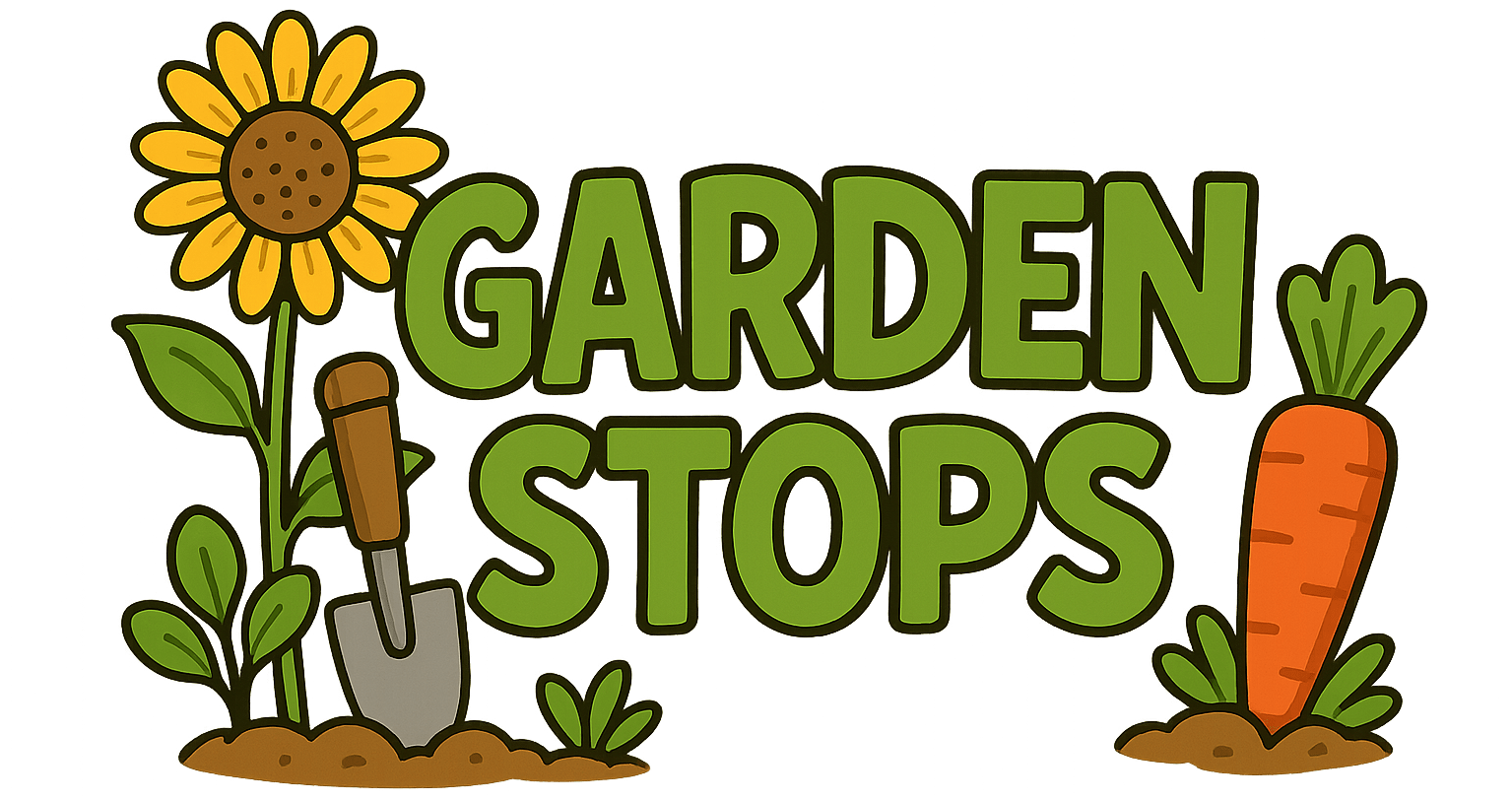Are you ready to finally succeed in growing cauliflower, even if you’ve struggled with it before? You’re not alone, and I’m here to guide you through the simplest method to achieve a thriving cauliflower crop. With just a few easy steps, you’ll be on your way to harvesting delicious, healthy cauliflowers—no more failed attempts or guesswork. Let’s turn your gardening failures into flavorful successes!
Introduction
Ah, cauliflower — that humble, somewhat shy vegetable that looks like an alien spaceship stranded in your garden. Its cauliflower head, a curious crown of tightly packed curds, has long been a symbol of culinary sophistication, yet growing it often feels akin to trying to keep a fickle cat happy—fragile, elusive, occasionally rebellious. If your previous attempts have fallen flat, leaving you scratching your head amid a sea of wilting leaves, fear not. Growing cauliflower isn’t reserved for expert gardeners armed with soil test kits and green thumbs the size of small trees. No, my friend, it’s simpler than you think, especially when you follow a straightforward, no-nonsense approach that transforms your gardening woes into a triumphant—if slightly crunchy—harvest.
Today, you’ll learn how to cultivate cauliflower with a method so simple, even the most garden-phobic can reap delicious success. Think of it as a masterclass in transforming the unpredictable into the predictable, the failed into flourishing. From sowing seeds to harvesting heads, I’ll guide you through easy steps, sprinkled with a dash of humor and a whole lot of practical wisdom. So, let’s dig in—literally—and discover how to grow cauliflower more easily by following some basic techniques that even first-time growers swear by. Prepare to leave your gardening disasters behind and step confidently into the world of cauliflower cultivation.
The Foundations of Growing Cauliflower: Precise Soil Preparation and Planting
If you’ve ever tried to grow vegetables in less-than-ideal dirt, you know that the foundation of any successful crop starts beneath the surface—literally. Cauliflower, that delicate diva of the vegetable world, demands a bed of proper soil, rich in nutrients but not overpowered by clay or sand. Think of it as setting the stage for a performance; the better the environment, the brighter the show. To win the cauliflower game, start with a thorough soil prep—amend your garden bed with compost, ensuring the soil is loose enough for roots to burrow but firm enough to support the heavy heads.
Now, planting cauliflower isn’t like tossing seeds into a pot and hoping for the best. It’s about sowing seeds properly and giving them a head start in life. You can even begin indoors before transplanting, which reduces stress during those critical early days. When sowing, make sure to plant seeds about a half-inch deep and space seedlings roughly twelve inches apart—plenty of room for those florets to stretch their roots and grow plump. Whether you’re planting directly in your garden or starting indoors, consistency is key. Keep the soil moist but not waterlogged; think of watering as the gentle encouragement your cauliflower needs to grow up strong and healthy.
Proper soil preparation isn’t just an inside joke among seasoned gardeners; it’s the secret sauce that keeps cauliflower from becoming a limp, patchy disappointment. Use organic matter to boost fertility, and consider using a garden planner to schedule your planting and care routines—anything to keep your veggie ambitions on track. Remember, cauliflower prefers cool weather conditions, so timing your planting properly can make all the difference, especially if you live in a warmer climate. When everything comes together—good soil, proper sowing, timely planting—the reward is a solid head that greets you with pride and a distinct “tada!”.
Controlling the Climate: Temperature, Light, and Water for Fabulous Cauliflower
Growing cauliflower is often a balancing act—think of it as trying to keep a teetering stack of plates from crashing to the floor. You need just the right temperature, light, and watering schedule to coax those white heads into their full glory. First, let’s talk about temperature, because cauliflower is fundamentally a cool-weather crop that despises the sweltering sun. Ideally, you want daytime temperatures between 60-70°F (15-21°C), and nights that don’t dip too far below this range. If you’re planting in the height of summer, you’re setting yourself up for disappointment, as hot weather can cause the heads to bolt or develop unsightly blemishes.
Controlling light involves more than just picking a sunny spot. While cauliflower loves sunshine, too much heat can be its undoing. Use shade cloths or strategic planting—like positioning your beds where they get morning sun but are shaded during the hottest part of the afternoon. Use controlled temperature and light for best results, especially if transplanting indoors. The goal is to mimic its natural environment, with cool, consistent conditions that allow the head to develop slowly and uniformly.
Watering, often the Achilles’ heel of amateur gardeners, is another crucial factor. Cauliflower prefers consistent, deep watering; the soil should never dry out completely nor be waterlogged. Think of watering as a gentle but persistent fountain, providing moisture that encourages a dense, firm head. Maintain a routine—perhaps once daily or every other day—especially during warm spells, using mulch around your plants to help retain soil moisture. This habitual watering fosters healthy growth, prevents stress, and reduces the likelihood of pests and diseases taking hold. Remember, a well-watered cauliflower is a happy cauliflower.
From Seed to Harvest: Nurturing Your Cauliflower Every Step of the Way
Once your cauliflower seeds are nestled into the soil or happy in their indoor starter pots, the journey truly begins. Patience becomes your best friend, as this slow-growing vegetable demands a gentle, attentive hand. During this stage, your role is to nurture, monitor, and occasionally whisper sweet nothings to those tender seedlings. Keep the temperature and light conditions stable—remember, cauliflower isn’t the plant for spontaneous weather experiments—and ensure your watering routine remains consistent. This stage is akin to raising a delicate child with big dreams—every detail counts.
As your plants develop, keep pests and diseases in check through good garden practices. Tiny aphids might think they’ve found a free buffet, but a blast of water or a natural insect repellent can send them packing. Proper spacing and crop rotation also help prevent fungal diseases that love damp, crowded conditions. Using a garden planner for effective planning and scheduling can drastically reduce missed watering or overlooked pests, turning your little patch of earth into a fortress of growth. When the head begins to form, keep a vigilant eye, and when it feels firm and compact, you’re ready for harvest.
Harvesting cauliflower might seem like the pinnacle of satisfaction, but it’s a delicate moment. A firm, white, and dense head signals it’s ready—don’t wait too long, or nature will take its course with loose, overgrown florets. Use a sharp knife to harvest just below the crown, and handle with care—your bounty, after all, is the result of patience, diligence, and a little bit of gardening magic. Following Ben’s step-by-step guide can streamline this process, and with a little practice, you’ll be harvesting cauliflower with the kind of pride that makes all the effort worth it. Growing cauliflower, once feared and mysterious, becomes a straightforward, rewarding endeavor when you follow these simple steps.
Frequently Asked Questions
1. Can I grow cauliflower in a small garden or container?
Absolutely! Cauliflower can thrive in containers or small garden beds if you select a spacious pot or a raised bed with plenty of rich, well-drained soil. Use a high-quality organic compost and ensure your container has adequate drainage holes to prevent waterlogging. Position the container where it receives consistent cool sunlight, and keep a close eye on watering, as containers tend to dry out faster. Starting cauliflower indoors before transplanting also works wonderfully in limited spaces, giving your plants a jumpstart before they go outdoors. With the right attention, even the tiniest garden space can yield a glorious cauliflower head.
2. How do I protect my cauliflower from pests like aphids or caterpillars?
Pests are part of the gardening adventure—some unwelcome guests that can ruin your crop if you’re not vigilant. To keep aphids, caterpillars, and other pests at bay, practice good garden hygiene: remove old debris, rotate crops annually, and encourage beneficial insects like ladybugs and lacewings that naturally eat pests. You can also use organic sprays such as neem oil or insecticidal soap as a first line of defense. Covering your plants with fine mesh netting during vulnerable stages adds an extra layer of protection. Staying attentive and maintaining healthy, stress-free plants reduces the risk significantly, turning your cauliflower garden into a pest-free paradise.
3. What’s the best way to tell when my cauliflower is ready for harvest?
The moment your cauliflower’s head is dense, firm, and has a bright white color (or the intended color for specific varieties), it’s time to harvest. The head should be about 6 to 8 inches in diameter, with a compact appearance—like a carefully arranged bouquet of vegetable florets. Use a sharp knife to cut just beneath the head, leaving a few outer leaves still attached to protect it. Harvesting early ensures a tender, sweet flavor, while waiting too long can result in a coarse, overgrown head. Keep in mind, different varieties might have slightly different signs, so observe your plants consistently—and enjoy the fruits of your labor before Mother Nature does it for you.
4. Can I grow cauliflower in warmer climates?
Growing cauliflower in warmer climates presents some challenges, but it’s not impossible. The key is to provide a cool environment—plant early in spring or late in fall, avoiding the hottest months. Use shade cloths to block excessive heat during the day and consider planting in partial shade where the afternoon sun is less intense. Maintaining soil moisture and employing mulches will help regulate temperature and keep roots cool. Some gardeners even try growing heat-tolerant varieties designed for warmer conditions. While it may require a bit more effort, with thoughtful planning and careful timing, you can successfully grow cauliflower in warm climates and enjoy this versatile vegetable year-round.
5. How can I maximize my cauliflower yield using tools like the Garden Planner?
Using a garden planner can transform a chaotic planting endeavor into a seamless, productive experience. With a digital or physical tool like the Garden Planner, you can schedule sowing, transplanting, watering, and harvesting activities, ensuring no detail slips through the cracks. It helps you visualize crop rotation, manage planting dates based on your climate, and optimize space—especially important if your garden isn’t the size of a football field. Bonus: you can try a free trial of the Garden Planner to see how it streamlines your gardening efforts. Planning ahead allows for more consistent care, which directly correlates with healthier, larger cauliflower heads and a more enjoyable gardening adventure.
Final Thoughts
Growing cauliflower might once have seemed a daunting endeavor—an almost mythical challenge for even the most seasoned green thumbs. But like any skill worth mastering, it begins with simple, deliberate steps and a willingness to learn from each planting season. The secret isn’t in complex techniques or special soils; it’s in understanding that patience, proper planning, and consistent care can turn even a failure into fertile ground for success. Your garden, once a patch of potential chaos, becomes a haven of nourishment and pride—each cauliflower head a crown earned through perseverance and practical know-how.
Remember, gardening is as much poetry as it is science. This vegetable teaches patience, humility, and respect for the natural rhythms of life. So, embrace the process, use resources wisely—like the handy garden planner or a free abridged copy of expert advice—and nurture your plants with all the care you’d give a friend. Before long, you’ll find yourself marveling at a bounty of beautiful cauliflower, basking in the simple joy of a garden well-tended and a harvest well-earned. Growing cauliflower isn’t just doable; it’s downright rewarding—more straightforward than you’ve ever imagined, once you follow these uncomplicated steps. Happy gardening!

